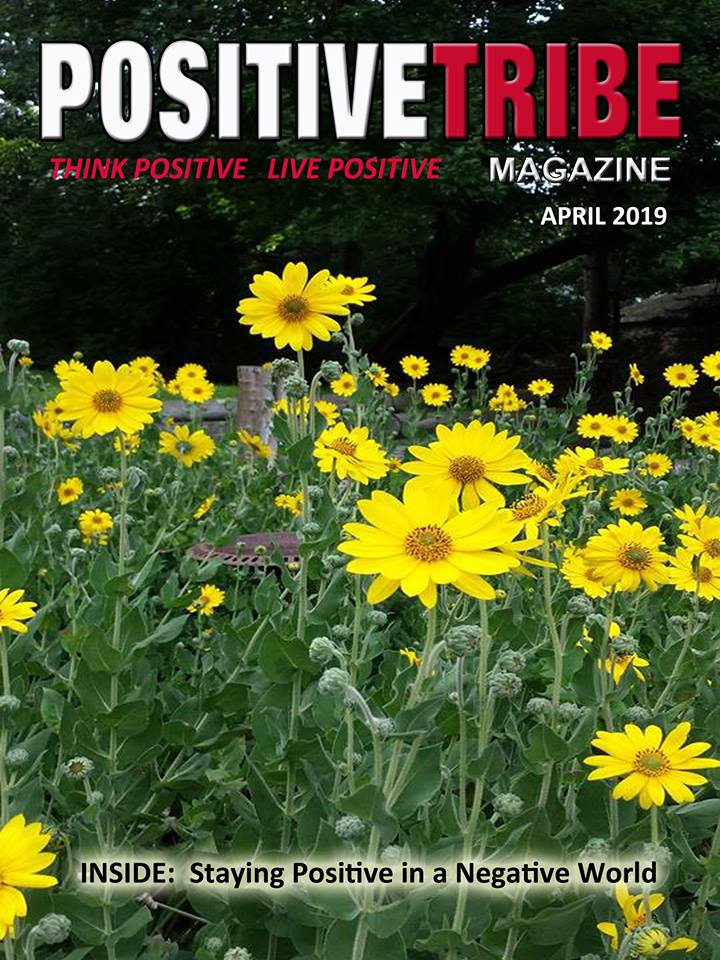This article is found in Positive Tribe Magazine, April 2019 edition. For your free copy, click here! www.PositiveTribe.com
What does “Spring Forward” mean to you?
At the pool the day after Daylight Saving Time went into effect, a friend of mine went on a rant about how she “hated DST” and waking up in the dark ruined her whole day. “I can’t stand it being so dark when I leave for the pool and the daylight until after 8:00 pm is awful. How can I ever get the kids to sleep when the sun is still shining? Argh” she grunted as she walked away.
Wow, I was really struck by her heavy spirit for “Spring Forward” to me means JOY! Well, maybe not the first few mornings when it IS dark when we get up to go to the pool, but we’re going to the POOL, in MARCH, in South Florida! “Paradise?” Just about!
We may be here suffering with sunshine in the evening, warm temperatures, and orchids blooming all around, but many of my friends and family members are stuck in bomb cyclones (when did that saying come about?!!) , shoveling ice and snow from the sidewalks, and just existing indoors, 24 x 7.
Daylight Saving, dark mornings, and one less hour of sleep…I’ll take it! I’ve lived life “up north” and I wouldn’t want to trade South Florida in March for a minute!
Sunshine longer into the evening means spending more time with my family and friends – especially my hubby. We love to take long walks after he gets home from work and when we have the extra daylight, we get to do it more often. Yes, as “newlyweds” we enjoy holding hands as we walk 3 miles around the neighborhood. Jim, our UPS man and friend, always beeps his horn and waves to us and when he stops at the house for a delivery he says how nice it is to see us holding hands! It brings him joy!
In today’s world where social isolation is becoming “the norm” and a detriment to society leading to depression and possible suicide, holding hands is a comfort, security, and a bonding experience for me.
Professor and popular speaker Brené Brown puts it this way: “Connection is why we’re here. It’s what gives purpose and meaning to our lives. . . . In order for connection to happen, we have to allow ourselves to be seen, really seen.”
I might venture to say, we need to be felt too – not just seen. Some say “a picture is worth a thousand words” but I think a HUG is priceless and something to be shared.
So back to the question, what does Daylight Saving Time really mean and why do we observe it?
I found a terrific article written by Ryan on www.interestinganswers.com and along with many other articles, here is his summary version. You decide if it’s something you’d like to keep or not!
While on an early-morning horseback ride around the London countryside in 1905, a man named William Willett had an epiphany. He thought that the United Kingdom should move its clocks ahead by 80 minutes between the months of April and October so that more people could enjoy the sunlight.
In 1907, Willett published his thoughts in The Waste of Daylight. He wrote, “The sun shines upon the land for several hours each day while we are asleep” and yet there “remains only a brief spell of declining daylight in which to spend the short period of leisure at our disposal.” He did mention that energy could be saved (fewer hours to keep the lights on), but his primary desire was to enjoy more time in the sunlight. He lobbied Parliament for legislation until his death in 1915—not living to see the law passed.
According to Michael Downing, author of Spring Forward: The Annual Madness of Daylight Saving Time, the first daylight saving time policy began in Germany in 1916, hoping to save energy during World War 1. Even though the Germans were first to officially implement daylight saving time, they likely got the idea from the British.
Contrary to popular belief, daylight saving time had nothing to do with farmers. In fact, farmers deeply opposed daylight saving time. Farming tasks are dictated by the sun, not the clock. Daylight saving time was very disruptive. Farm workers ended up working less since the cows weren’t ready to be milked an hour earlier and then they still left for dinner at the same time all year round.
The first U.S. law for daylight saving time went into effect in 1918 for the same energy saving reasons as mentioned above. Many laws related to daylight saving time have come and gone over the years, but it’s still a very real thing for many of us here in the U.S. to this day.
I, for one, would love to have DST all year long. Lawmakers in Florida approved a bill to keep DST going through the year. Check out The Sunshine Protection Act by Senator Marco Rubio. (https://www.rubio.senate.gov/public/_cache/files/14e39e20-b852-4cae-b98b-258e0c0898a6/1C912A264D838911D32528FA5B1FD0FB.sunshine-protection-act-2019-one-pager.pdf) but it’s up to the federal government to approve it.
What’s taking them so long? Maybe they aren’t going for hand-in-hand walks with their significant others enough to realize what they’re missing! But check out what Senator Rubio states as the potential effects/benefits:
- Reduced car crashes and car accidents involving pedestrians.
- Reduced risk for cardiac issues, stroke, and seasonal depression.
- Reduces number of robberies by 27%.
- Benefits to the economy.
- Reduced childhood obesity and increased physical fitness (longer walks!)
- Benefits to agricultural economy.
- Reduced energy usage.
Sunshine in the morning, sunshine in the evening, and sunshine in my soul today! I love spring and my positive attitude comes from keeping the curtains wide open and the sights and sounds of nature clearing out the cobwebs of my porch and my mind!
